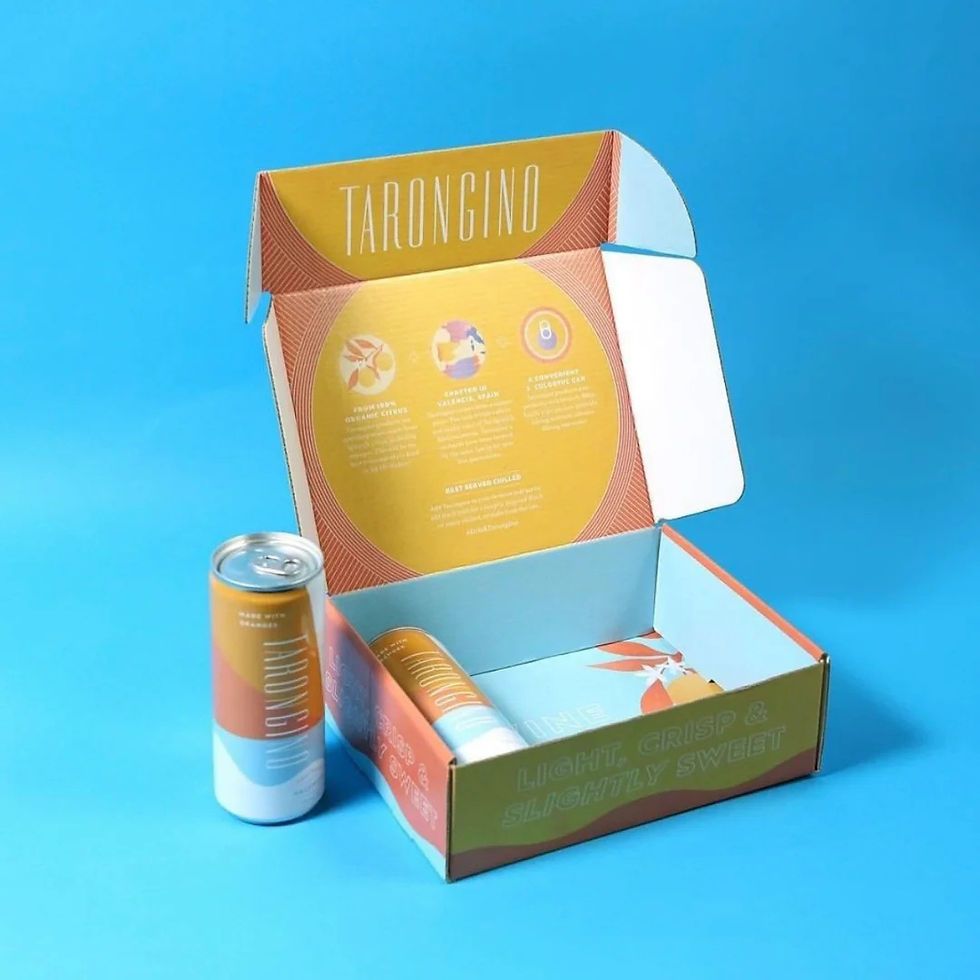Unlocking the Art of Packaging Design: From Concept to Creation
- Xiao Lin

- Aug 1, 2022
- 4 min read
Updated: Feb 13
In today's competitive marketplace, the importance of effective packaging design cannot be overstated. For businesses across industries, packaging serves as a critical touchpoint between the product and the consumer—a silent salesman that communicates value, quality, and brand identity. At South Print, we understand that packaging design is more than just a functional necessity; it is a strategic asset that can significantly influence consumer behavior and drive business success. In this comprehensive guide, we will delve into the three core elements of packaging design: material, structure, and appearance. By exploring these components in detail, we aim to provide you with the insights and tools needed to create packaging that not only protects your product but also enhances its marketability and appeal.
1. Material: The Foundation of Your Packaging Design

Why It Matters: The material you choose for your packaging is the foundation upon which everything else is built. It's not just about protecting your product; it's about creating a first impression that resonates with your customers. The right material can enhance the perceived value of your product, communicate your brand's commitment to sustainability, and ensure that your packaging is both functional and aesthetically pleasing. Whether you're aiming for a luxurious feel with metal or plastic, or a more eco-friendly approach with cardboard and paperboard, the material sets the tone for your entire packaging strategy.
Types of Materials:
Cardboard and Paperboard: Lightweight, cost-effective, and recyclable. Ideal for a wide range of products.
Corrugated Paper: Strong and protective, perfect for shipping boxes and packaging that needs to withstand wear and tear.
Plastic: Durable and waterproof, suitable for products that require protection from moisture.
Metal: Luxurious and sturdy, often used for high-end products like cosmetics and electronics.
Corrugated Paper: A Closer Look Corrugated paper is composed of three parts: the surface paper (liner), the corrugated core paper (medium), and the bottom paper (liner). There are several types of corrugated paper, each with different thicknesses and strengths:
A-Flute, B-Flute, C-Flute, E-Flute, and F-Flute: These are the basic thicknesses used internationally.
Combined Flutes: For more complex packaging needs, combinations like EB-Flute, BC-Flute, AB-Flute, and BCB-Flute are used.

2. Structure: The Shape of Your Packaging
Why It Matters: The structure of your packaging is the core work of packaging design. It's not just about creating a container for your product; it's about designing a functional, protective, and visually appealing structure that enhances the overall experience for your customers. A well-designed structure ensures that your product is protected during shipping and handling, while also making it easy to display and use. The right structure can also make your packaging more sustainable by reducing material waste and improving recyclability. By carefully considering the shape, size, and functionality of your packaging, you can create a design that not only meets your product's needs but also stands out on the shelf.
Design Process:
Conceptualization: Start with a basic three-dimensional concept. Unfold a basic box shape on paper and cut out the unfolded diagram.
Prototyping: Fold the three-dimensional template model to see how it works in practice.
Iteration: Modify the template based on your ideas and needs, then re-expand it into a flat drawing.
Finalization: Repeat the process until the flat unfolded diagram can be smoothly folded into a box.

3. Appearance: The Visual Impact of Your Packaging Design
Why It Matters: The appearance of your packaging is crucial for commercial promotion and sales. In a crowded marketplace, your packaging is often the first thing that catches a customer's eye. A well-designed package should be visually appealing, easy to read, and distinct from competitors. It should reflect the consistency between the product's interior and exterior, making it easy for consumers to identify your brand and understand what they're buying. The right appearance can stimulate consumers' desire to buy and ultimately drive sales. By combining elements like brand names, logos, typography, illustrations, and product descriptions, you can create a packaging design that not only looks great but also communicates your brand's value proposition effectively.
Key Elements:
Brand Names and Logos: Clearly display your brand identity.
Typography: Use standard fonts that are easy to read.
Illustrations and Images: Enhance the visual appeal with high-quality graphics.
Product Descriptions: Include clear information about the product, including quality, ingredients, and nutritional content.
Barcodes and Contact Information: Ensure all necessary details are included.
Design Tips:
Consistency: Reflect the consistency between the product's interior and exterior.
Display: Make sure the packaging is easy to display in retail spaces.
Distinctiveness: Create a unique look that sets your product apart from similar items.


Putting It All Together
Packaging design is a blend of material, structure, and appearance. By carefully selecting the right materials, creating a functional and visually appealing structure, and ensuring a captivating appearance, you can create packaging that not only protects your product but also enhances its marketability. At South Print, we specialize in bringing your packaging design visions to life. From concept to creation, our team of experts can guide you through every step of the process, ensuring that your packaging meets your needs and exceeds your expectations.
Conclusion
At South Print, we specialize in bringing your packaging design visions to life. From concept to creation, our team of experts can guide you through every step of the process, ensuring that your packaging meets your needs and exceeds your expectations. Ready to elevate your packaging design? Contact us today to discuss your project and see how we can help you create packaging that stands out!









Comments